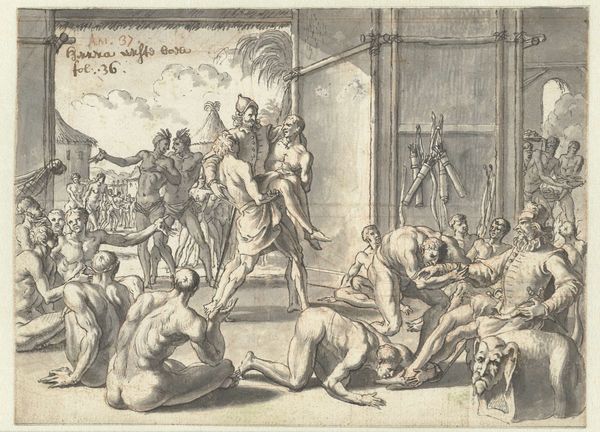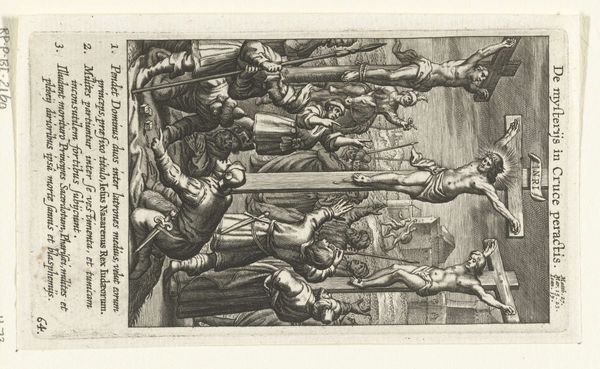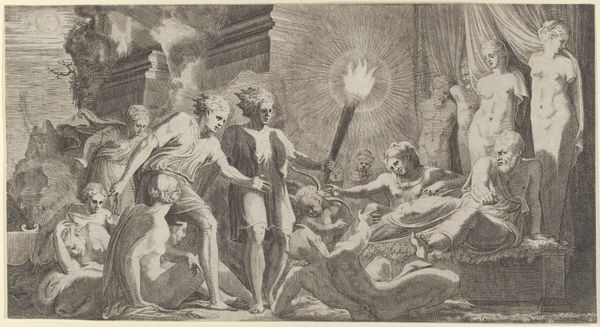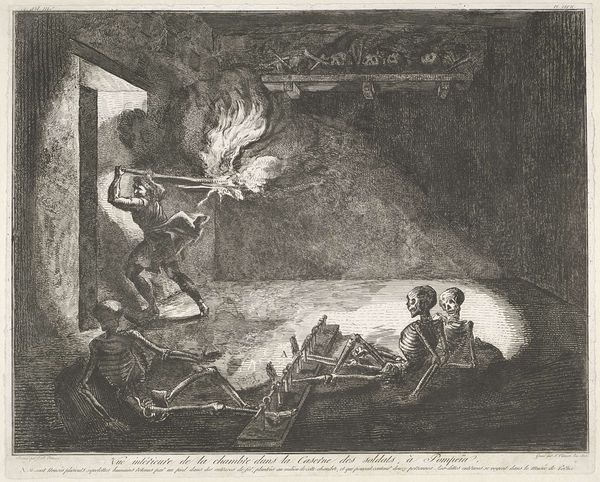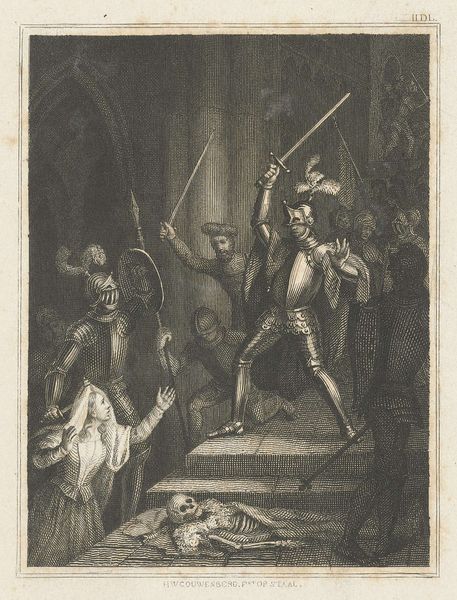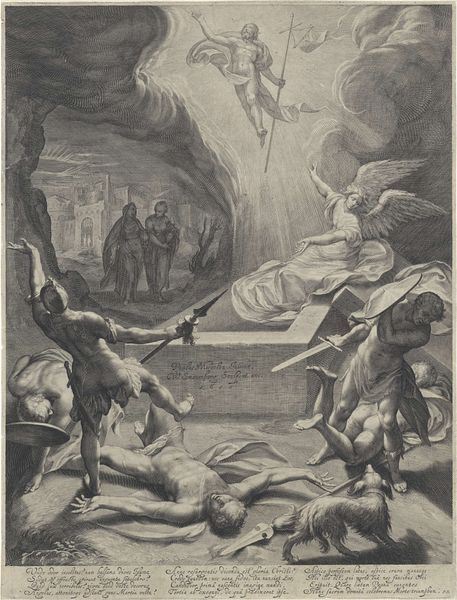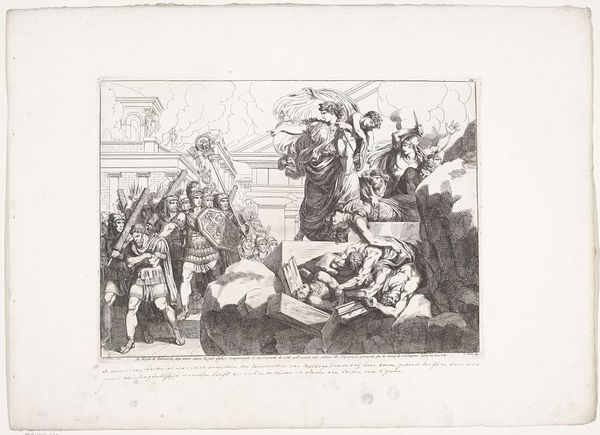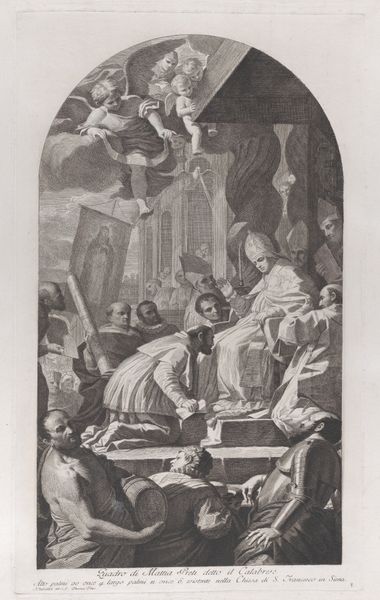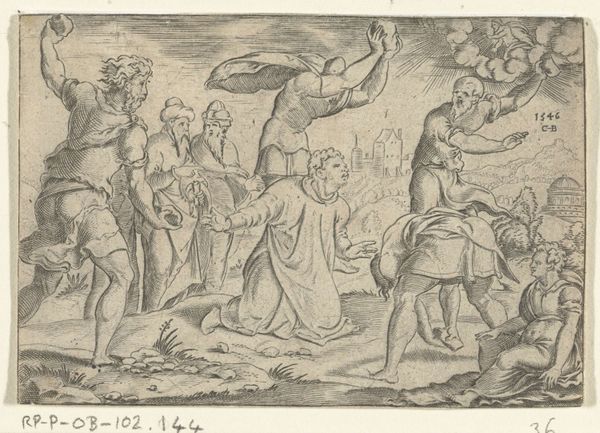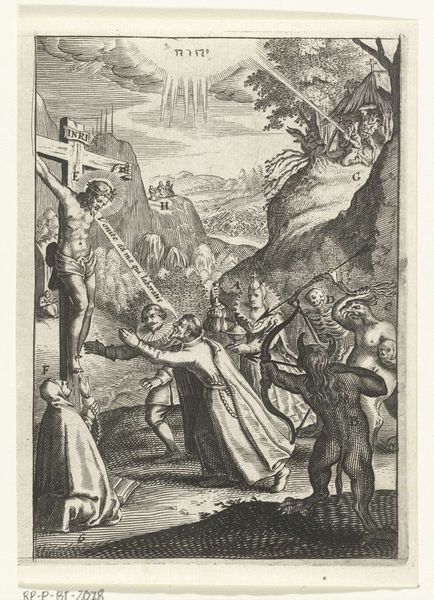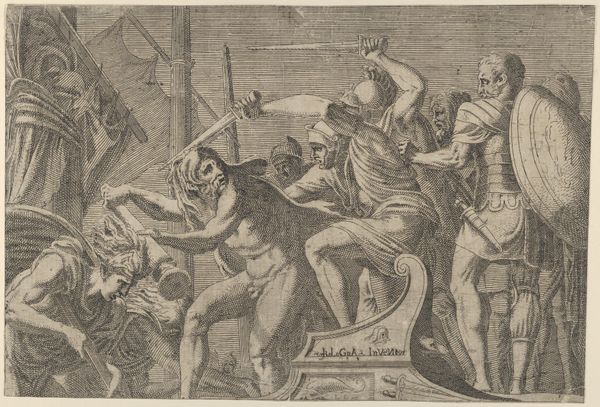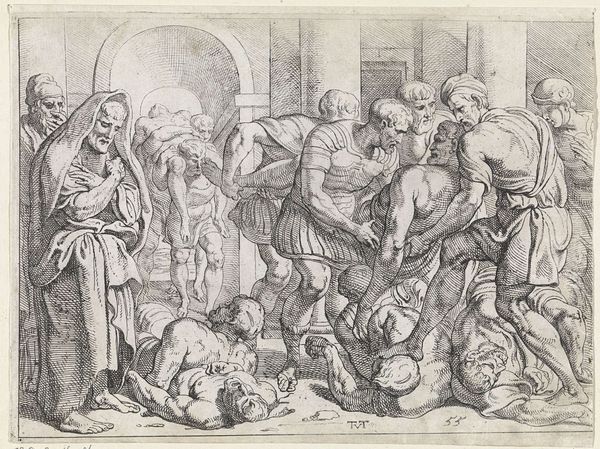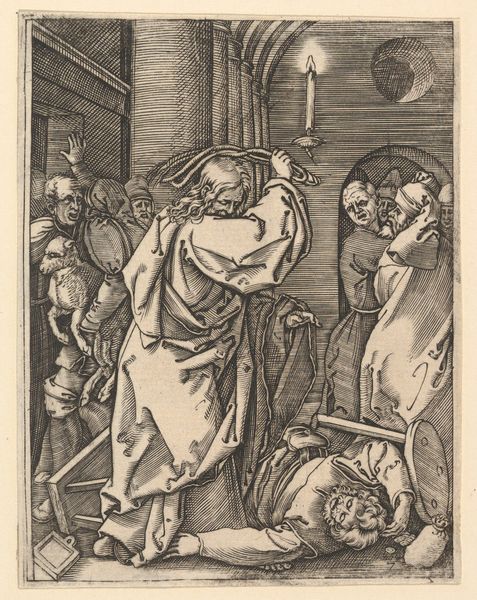
drawing, paper, ink, charcoal
#
drawing
#
narrative-art
#
baroque
#
charcoal drawing
#
figuration
#
paper
#
ink
#
coloured pencil
#
genre-painting
#
charcoal
#
history-painting
Dimensions: height 243 mm, width 360 mm
Copyright: Rijks Museum: Open Domain
Curator: Here we have Gerard ter Borch the Elder’s 1624 drawing, "Adoration of the Shepherds," currently residing in the Rijksmuseum collection. Executed with charcoal, ink, and colored pencil on paper, it's a striking example of Baroque narrative art. Editor: It's rather subdued at first glance, isn’t it? A monochrome world, save for what seems to be a burst of light emanating from the baby Jesus. Curator: Precisely! The Baroque period leaned heavily into contrasts, both visual and thematic. Note how ter Borch uses chiaroscuro, the dramatic play of light and shadow, to guide our eye directly to the focal point. It speaks to a period rife with religious and political turmoil. How did the church use imagery to convey it's narratives? Editor: Good point. Considering the context of the Dutch Golden Age and the rise of Protestantism, the visual power of this Adoration takes on extra meaning. The strategic use of the space shows how deeply the Baroque plays with perceptions of devotion. Curator: Absolutely. Ter Borch, coming from a family deeply involved in artistic and intellectual circles, would have been keenly aware of the social currents influencing art's purpose. This piece feels intentional not just on aesthetic choices but from what they represent. Notice too, that the shepherds are not idealized figures. Editor: No, they’re rendered with realism; weathered faces, simple clothes, making it relatable. A representation that pulls at our cultural and societal ties. It speaks of the people in power against everyone else. How art reflects culture and vice versa. Curator: Exactly! It suggests a democratizing impulse, aligning the sacred narrative with the everyday lives of ordinary people. In our present, the ability to reclaim the artistic experience is integral. Editor: In that sense, Ter Borch is not merely illustrating a biblical scene but is crafting a nuanced social commentary. It reminds us how artwork and art history intertwine in a way that's ever shifting and fluid. Curator: Ultimately, contemplating "Adoration of the Shepherds," provokes questions on artistic innovation within set constraints and the influence socio-political undercurrents have on that expression. Editor: I leave with a heightened appreciation for what's represented here, the artwork as a product of time and reflection and what's left for viewers to interpret through a contemporary view.
Comments
No comments
Be the first to comment and join the conversation on the ultimate creative platform.
